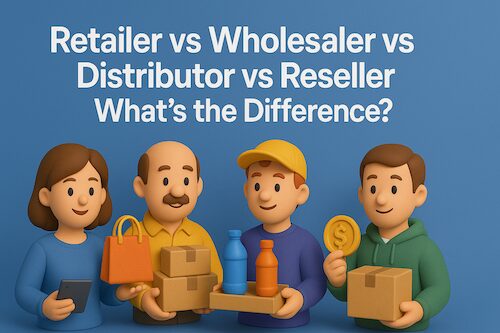What is the meaning of SKU?
SKU stands for Stock Keeping Unit, a unique identifier assigned to each distinct product and service that a business offers. SKUs are used internally by retailers, warehouses, and fulfillment centers to track inventory, manage stock, and streamline logistics. Each SKU corresponds to a specific item with unique characteristics—such as brand, size, color, or packaging format—and is essential for maintaining organized and efficient operations in both physical and digital commerce environments.
How is a SKU structured?
SKUs are typically alphanumeric codes, and their structure can be customized based on a business’s product taxonomy. A well-designed SKU may include:
- Brand code – e.g., “NK” for Nike
- Product type or category – e.g., “SH” for shoes
- Size – e.g., “09” for size 9
- Color – e.g., “RD” for red
- Packaging or version code – e.g., “BX” for boxed
An example SKU for a Nike red running shoe, size 9, could look like: NK-SH-09-RD-BX.
SKU formats vary across companies and industries. The key is to create a logical, consistent structure that makes it easy to decipher and manage inventory.
Why are SKUs important in inventory and fulfillment?
SKUs serve as the backbone of inventory management. Their benefits include:
- Efficient tracking: Enables quick and accurate identification of items in large catalogs
- Stock visibility: Real-time monitoring of how many units are in stock, sold, or returned
- Warehouse optimization: Supports location-based picking and smart inventory placement
- Error reduction: Minimizes picking/packing mistakes with barcode scanning
- Data analytics: Helps businesses analyze sales by product variant or category
Without SKUs, inventory management becomes chaotic—especially for businesses with large product ranges or multichannel sales.
How do SKUs differ from barcodes and UPCs?
It’s common to confuse SKUs with UPCs (Universal Product Codes) and barcodes, but they serve different purposes:
- SKU: Internal identifier created by the business to manage inventory
- UPC: Standardized global identifier assigned by GS1, used at the point of sale
- Barcode: Visual representation (machine-readable) of either a SKU or UPC
SKUs are not universal; they vary from one retailer or warehouse to another. UPCs, however, remain consistent across the entire retail chain.
Where are SKUs used?
SKUs are essential across nearly all sectors dealing with inventory:
- Retail: Online and in-store product tracking, sales forecasting, reorder management
- Ecommerce: Product listings, inventory syncing, and order fulfillment
- Warehousing: Bin-level organization, picking routes, cycle counting
- Manufacturing: Bill of materials (BOM) and assembly tracking
- Wholesale & Distribution: Bulk inventory segmentation and logistics
Whether it’s a fashion store managing thousands of SKUs for different sizes and colors, or an electronics brand coordinating global shipments, SKUs are vital to precision and efficiency.
What are the best practices for creating SKU codes?
Creating SKU codes is part art, part science. Follow these best practices:
- Keep it short but meaningful: Use abbreviations that convey useful details
- Use a consistent structure: Apply a standardized format across all items
- Avoid confusing characters: Skip letters like O, I, and Q that may resemble numbers
- Include key attributes: Such as size, color, style, or variation
- Use dashes or delimiters: For readability, especially in long codes
Example: TSH-M-BLK-XL might refer to a T-shirt, male, black, size XL.
What tools or systems manage SKUs?
SKU management is automated in most modern business systems:
- ERP systems: SAP, Oracle NetSuite, Odoo
- Inventory platforms: Zoho Inventory, Cin7, DEAR Systems
- Ecommerce platforms: Shopify, WooCommerce, BigCommerce
- POS systems: Lightspeed, Square, Vend
- WMS and fulfillment platforms: ShipBob, Waredock, ShipStation
These systems assign, track, and synchronize SKU information across sales channels and warehouse operations.
How do SKUs support multichannel selling?
For businesses that sell across multiple platforms—Amazon, Shopify, eBay, and physical stores—SKUs act as the linking mechanism to track inventory in real-time. Benefits include:
- Stock consistency: Avoids overselling and understocking across platforms
- Sales performance tracking: Analyze SKU-level sales trends by channel
- Unified reporting: Combines orders from different sources into a single dashboard
- Automated order routing: Fulfill orders based on SKU and warehouse location
Multichannel fulfillment is nearly impossible to manage efficiently without accurate SKU usage.
How do SKUs influence logistics and fulfillment?
In warehouse and 3PL operations, SKUs power everything from bin assignment to packing lists:
- Picking optimization: Workers use SKU-based routes for fast retrieval
- Inventory audits: Cycle counting is based on SKU categories or zones
- Kitting and bundling: Product kits are often formed based on parent-child SKUs
- Returns and restocking: SKUs identify restock eligibility or condition categories
A robust SKU system reduces errors, speeds up order processing, and enhances warehouse visibility.
Can you give an example of SKU usage in a real-world scenario?
A wellness brand sells a face moisturizer in three sizes (30ml, 60ml, 100ml) and two scents (Lavender and Citrus). Instead of treating this as one product, it creates separate SKUs for each variant:
- MOI-30-LAV – Moisturizer, 30ml, Lavender
- MOI-60-CIT – Moisturizer, 60ml, Citrus
- MOI-100-LAV – Moisturizer, 100ml, Lavender
This enables precise inventory tracking, restocking decisions, and data-driven marketing (e.g., discovering that Lavender outsells Citrus in 100ml).
How does Waredock support SKU management?
Waredock supports ecommerce and retail brands by offering advanced SKU-level inventory tracking, real-time updates, and multi-warehouse fulfillment. Whether a business has 100 or 10,000 SKUs, Waredock’s platform ensures:
- Clear visibility: Know where every SKU is stored and how much is in stock
- Smart routing: Orders are fulfilled from the optimal warehouse based on SKU availability
- Bulk SKU uploads: Easily onboard large catalogs through CSV or platform integrations
- Kitting and bundling: Automatically track parent and child SKUs for custom packages
Waredock ensures SKU-level precision across borders, channels, and seasons—critical for scaling operations without chaos.








